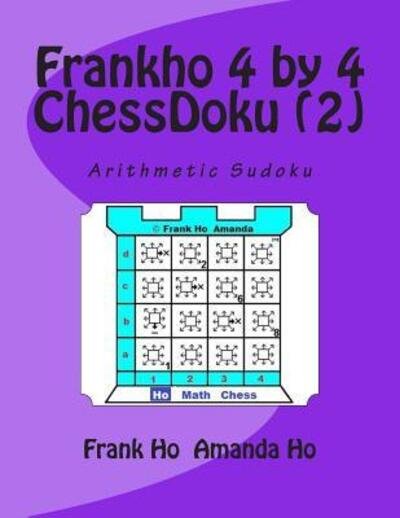
Tell your friends about this item:
Mom! I Learn Division Using Math-Chess-Puzzles Connection
Amanda Ho
Mom! I Learn Division Using Math-Chess-Puzzles Connection
Amanda Ho
If you have any comments or problems on this workbook, please email them to fho1928@gmail.com.
I have taught students from grade 1 to grade 12 since I opened the Vancouver Ho Math Chess Learning Centre in 1995. I have personally witnessed on how some students suffered because they could not master some very basic computational skills. I do not want to create a workbook, which is about practice, practice, and more practice of computational skills. This has motivated me to create a workbook that would be very different from the conventional ones in terms of the way the questions are presented to the students. I wanted students to learn basic computation skills by using the carefully designed worksheets so that students can master basic computation skills in an intuitive way. These worksheets were being designed while I actually watched student's work and modified accordingly to their responses. I had an idea to create a computational workbook, which integrates chess knowledge, puzzles, and math in such a way that students could learn how to transfer abstract symbols into numerical values and then calculating the results by using puzzles-like problems. This idea may sound very simple but the result is much more profound - not only students learn to do math in multi-step, they also learn how to process information by converting abstract symbols into numerical values, which is important in learning critical thinking skill. One very noticeable computation format in Ho Math Chess math workbooks is the way computation directions are presented - it is no longer just a linear fashion; instead, students work on computations in all kinds of directions: top down, bottom up, left to eight, right to left, diagonally, and even circular motion. For example, the multiplication workbook computation format is designed in such a way that it takes the boredom out by using the format of multi-direction computation and multi-concept learning. Students could be introduced division computation procedure while working on multiplication and even equivalent fractions but without realizing that they are actually working on advanced math concepts and mechanic computation procedure beyond their grade level. One other example is that the factoring procedure is introduced while students are working on multiplication. These many embedded computational procedures included in the elementary level of math workbook will benefit students when they go to higher grades.
| Media | Books Paperback Book (Book with soft cover and glued back) |
| Released | September 13, 2015 |
| ISBN13 | 9781927814802 |
| Publishers | Ho Math Chess Tutor Franchise Learning C |
| Pages | 316 |
| Dimensions | 216 × 280 × 17 mm · 734 g |
| Language | English |
More by Amanda Ho
More from this series
See all of Amanda Ho ( e.g. Paperback Book and Hardcover Book )

 Christmas presents can be returned until 31 January
Christmas presents can be returned until 31 January

































